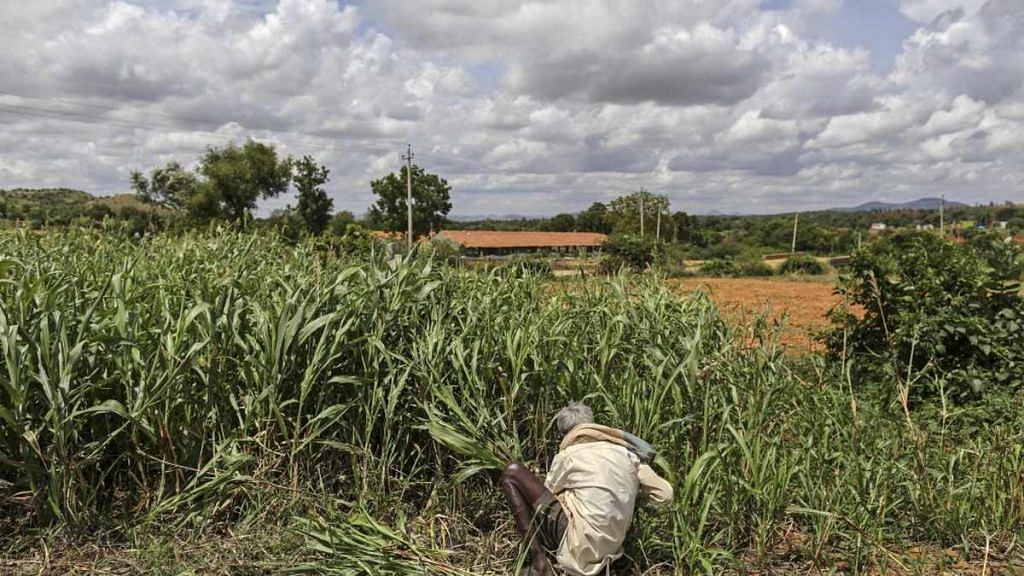New Delhi: Many prominent politicians, columnists and critics have used Bihar’s abolition of the Agriculture Produce Market Committee (APMC) Act to argue that the reforms proposed by the three new farm laws will be a disaster.
In episode 634 of ‘Cut The Clutter’, ThePrint’s Editor-in-Chief Shekhar Gupta talks about the agricultural reforms in Bihar and the growth the state registered after they were implemented.
Gupta noted that several politicians are saying the abolition of the APMC Act is bad and are calling for a rollback of the three farm laws. However, Gupta said, 17 states have already abolished or made substantive changes to the APMC Act.
These states are Andhra Pradesh, Gujarat, Himachal Pradesh, Karnataka, Rajasthan, Goa, Madhya Pradesh, Telangana, Chhattisgarh, Mizoram, Maharashtra, Uttar Pradesh, Uttarakhand, Jharkhand, Nagaland, Haryana and Punjab. Many of these states are also allowing direct marketing of agricultural produce by farmers in private mandis.
Also read: 5 reasons why Modi govt is finding it difficult to tackle protesting farmers
Case study of Bihar
In Bihar, the APMC Act was abolished in 2006. Between 2011 and 2018-19, India’s growth rate was 7.5 per cent whereas in Bihar it was 13.3 per cent.
Bihar is also the state where around 70 to 80 per cent of the population is involved in agriculture and the state’s growth rate has boomed at almost twice the rate of India’s after agricultural reforms.
In comparison, before the reforms were implemented, from 1993-94 to 2000-05, India’s average growth was 6.8 per cent and Bihar was trailing at 5.3 per cent.
After Janata Dal United’s Nitish Kumar came to power and the APMC Act was abolished, between 2005-06 and 2014-15, Bihar’s agricultural growth was 4.7 per cent while India’s agriculture grew by 3.6 per cent.
In the last five years, India’s agricultural growth has been 2 per cent while that of Bihar has been 7 per cent. Bihar is an example that agriculture does well when reforms are carried out, said Gupta.
Bihar is also the fourth largest producer of vegetables and eighth largest producer of fruits in India, and is also the most heavily populated region with a population density of 1,102 people per square kilometre.
As agriculture grew, other sectors also grew. Bihar’s construction growth rate currently is 29 per cent, noted Gupta.
Comparatively, the two green revolution states of Punjab and Haryana have a population density of 551 and 573 persons per square kilometre, respectively.
If we look at Punjab, its per capita income is four times that of Bihar. However, its GDP growth has been trailing India’s GDP growth since 2013-14.
For the first time in a decade, Punjab’s growth rate surpassed India’s last year but otherwise it has been way behind the country’s, said Gupta.
Between 1972 and 1985-86, when India’s agricultural growth rate was 2.3 per cent, Punjab’s was 5.7 per cent because of the Green Revolution. However, between 1986-87 and 2004-05, India’s agricultural growth was 2.94 per cent and Punjab’s growth declined to 3 per cent and continued to go down. Between 2005-06 and 2014-15, Punjab’s agricultural growth rate declined to 1.61 per cent.
The seeds of decline in Punjab’s agricultural growth occurred because farming in the state was caught in the paddy and wheat monoculture.
Also read: A 2019 email & a govt report — why farmers are refusing to trust MSP, procurement promises
Why Punjab has been trailing
Between 2005-06 and 2014-15 in India, during the country’s agricultural boom after the Green Revolution, many states recorded immense growth, said Gupta.
During this period, Madhya Pradesh recorded agricultural growth of 9.67 per cent, Jharkhand recorded 8.59 per cent while Chhattisgarh recorded a growth of 6.61 per cent. It was 6.3 per cent in Gujarat, 5.4 per cent in Rajasthan, 5.17 per cent in Karnataka, 4.8 per cent in Andhra Pradesh, 4.45 per cent in Tamil Nadu and 4.06 per cent in Maharashtra.
Agriculture in most states also grew faster than the national average that was 3.5 per cent at the time. However, in states like Haryana (around 3.5 per cent), Uttar Pradesh (3.2 per cent) , Himachal Pradesh (2.97 per cent) and Assam (3.17 per cent), the growth was lower than the national average. Punjab’s agricultural growth rate in this period was only 1.61 per cent while Kerala had a negative agricultural growth rate of -0.97 per cent.
Punjab has a problem in terms of agriculture and it should look within, noted Gupta.
He added that Punjab looks at Bihar and UP as poor states that provide labourers for farming. However, these states are bridging the gap faster and doing much better.
A look at the GDP growth figures of Punjab and Bihar reveals that Punjab’s growth rate was 5.9 per cent in 2005-06 while Bihar’s was 0.9 per cent. In 2006-07, Punjab grew at 10.1 per cent but Bihar’s rate reached 17.7 per cent. In 2009-10, Punjab’s growth rate was at 6.6 per cent while Bihar’s was 10.4 per cent. In 2010-11, Punjab’s rate was 7 per cent while Bihar’s growth rate was 14.7 per cent. In 2011-12, Punjab’s growth rate was 5.7 per cent while Bihar’s was 13.1 per cent.
Haryana, which was carved out of Punjab in 1966, has also done better than Punjab in terms of GDP growth.
Except in 2007-08, Punjab’s growth rate has been less than Haryana’s since 2005-06.
People of Punjab need to ask their politicians what they have done wrong, said Gupta. He added that data revealed that the land under lentils, oil, seeds, cotton has collapsed in Punjab.
Everybody in Punjab has moved to the vicious cycle of wheat and paddy, while other states such as Maharashtra Andhra Pradesh, Karnataka are moving on with vegetables, fruits, and other value-adding crops, said Gupta.
Watch the latest episode of CTC here:
